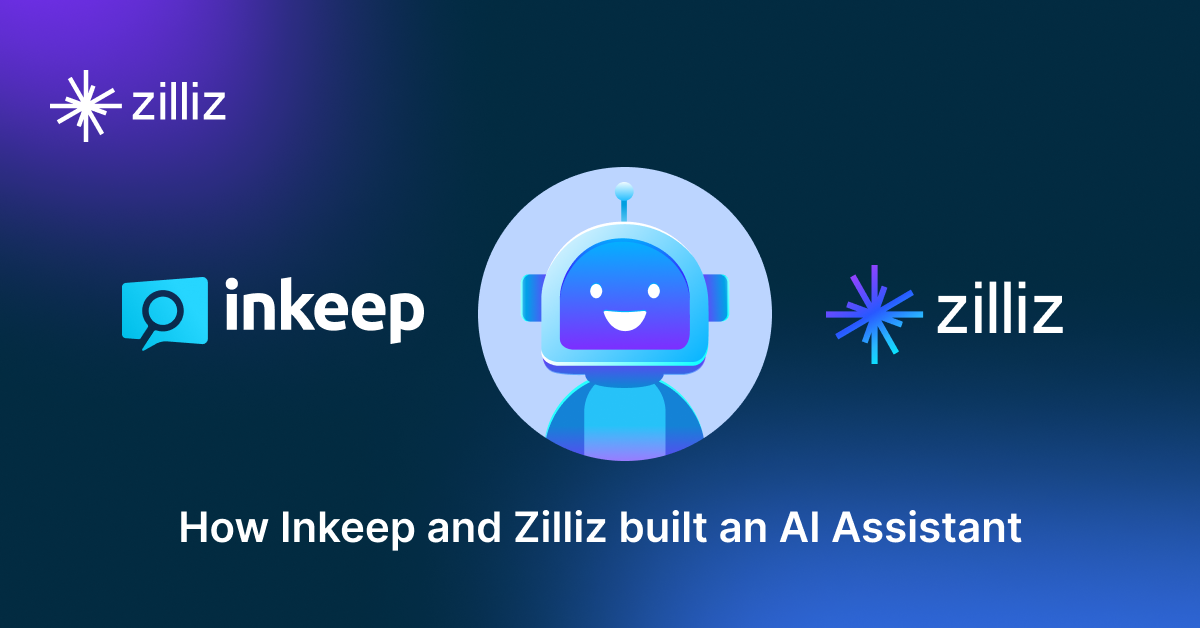Build RAG Chatbot with LangChain, Faiss, Fireworks AI Llama 3.1 70B Instruct, and Cohere embed-multilingual-v2.0
Introduction to RAG
Retrieval-Augmented Generation (RAG) is a game-changer for GenAI applications, especially in conversational AI. It combines the power of pre-trained large language models (LLMs) like OpenAI’s GPT with external knowledge sources stored in vector databases such as Milvus and Zilliz Cloud, allowing for more accurate, contextually relevant, and up-to-date response generation. A RAG pipeline usually consists of four basic components: a vector database, an embedding model, an LLM, and a framework.
Key Components We'll Use for This RAG Chatbot
This tutorial shows you how to build a simple RAG chatbot in Python using the following components:
- LangChain: An open-source framework that helps you orchestrate the interaction between LLMs, vector stores, embedding models, etc, making it easier to integrate a RAG pipeline.
- Faiss: also known as Facebook AI Similarity Search, is an open-source vector search library that allows developers to quickly search for semantically similar multimedia data within a massive dataset of unstructured data. (If you want a much more scalable solution or hate to manage your own infrastructure, we recommend using Zilliz Cloud, which is a fully managed vector database service built on the open-source Milvus and offers a free tier supporting up to 1 million vectors.)
- Fireworks AI Llama 3.1 70B Instruct: This advanced model is designed for instruction-following tasks, featuring a vast 70 billion parameters for enhanced comprehension and context. It excels in generating coherent, contextually relevant outputs for complex queries, making it ideal for interactive applications, educational tools, and customer support systems requiring detailed and precise information.
- Cohere embed-multilingual-v2.0: This model specializes in generating high-quality multilingual embeddings, enabling effective cross-lingual understanding and retrieval. Its strengths lie in capturing semantic relationships in diverse languages, making it suitable for applications such as multilingual search, recommendation systems, and global content analysis where language diversity is a critical factor.
By the end of this tutorial, you’ll have a functional chatbot capable of answering questions based on a custom knowledge base.
Note: Since we may use proprietary models in our tutorials, make sure you have the required API key beforehand.
Step 1: Install and Set Up LangChain
%pip install --quiet --upgrade langchain-text-splitters langchain-community langgraph
Step 2: Install and Set Up Fireworks AI Llama 3.1 70B Instruct
pip install -qU "langchain[fireworks]"
import getpass
import os
if not os.environ.get("FIREWORKS_API_KEY"):
os.environ["FIREWORKS_API_KEY"] = getpass.getpass("Enter API key for Fireworks AI: ")
from langchain.chat_models import init_chat_model
llm = init_chat_model("accounts/fireworks/models/llama-v3p1-70b-instruct", model_provider="fireworks")
Step 3: Install and Set Up Cohere embed-multilingual-v2.0
pip install -qU langchain-cohere
import getpass
import os
if not os.environ.get("COHERE_API_KEY"):
os.environ["COHERE_API_KEY"] = getpass.getpass("Enter API key for Cohere: ")
from langchain_cohere import CohereEmbeddings
embeddings = CohereEmbeddings(model="embed-multilingual-v2.0")
Step 4: Install and Set Up Faiss
pip install -qU langchain-community
from langchain_community.vectorstores import FAISS
vector_store = FAISS(embedding_function=embeddings)
Step 5: Build a RAG Chatbot
Now that you’ve set up all components, let’s start to build a simple chatbot. We’ll use the Milvus introduction doc as a private knowledge base. You can replace it with your own dataset to customize your RAG chatbot.
import bs4
from langchain import hub
from langchain_community.document_loaders import WebBaseLoader
from langchain_core.documents import Document
from langchain_text_splitters import RecursiveCharacterTextSplitter
from langgraph.graph import START, StateGraph
from typing_extensions import List, TypedDict
# Load and chunk contents of the blog
loader = WebBaseLoader(
web_paths=("https://milvus.io/docs/overview.md",),
bs_kwargs=dict(
parse_only=bs4.SoupStrainer(
class_=("doc-style doc-post-content")
)
),
)
docs = loader.load()
text_splitter = RecursiveCharacterTextSplitter(chunk_size=1000, chunk_overlap=200)
all_splits = text_splitter.split_documents(docs)
# Index chunks
_ = vector_store.add_documents(documents=all_splits)
# Define prompt for question-answering
prompt = hub.pull("rlm/rag-prompt")
# Define state for application
class State(TypedDict):
question: str
context: List[Document]
answer: str
# Define application steps
def retrieve(state: State):
retrieved_docs = vector_store.similarity_search(state["question"])
return {"context": retrieved_docs}
def generate(state: State):
docs_content = "\n\n".join(doc.page_content for doc in state["context"])
messages = prompt.invoke({"question": state["question"], "context": docs_content})
response = llm.invoke(messages)
return {"answer": response.content}
# Compile application and test
graph_builder = StateGraph(State).add_sequence([retrieve, generate])
graph_builder.add_edge(START, "retrieve")
graph = graph_builder.compile()
Test the Chatbot
Yeah! You've built your own chatbot. Let's ask the chatbot a question.
response = graph.invoke({"question": "What data types does Milvus support?"})
print(response["answer"])
Example Output
Milvus supports various data types including sparse vectors, binary vectors, JSON, and arrays. Additionally, it handles common numerical and character types, making it versatile for different data modeling needs. This allows users to manage unstructured or multi-modal data efficiently.
Optimization Tips
As you build your RAG system, optimization is key to ensuring peak performance and efficiency. While setting up the components is an essential first step, fine-tuning each one will help you create a solution that works even better and scales seamlessly. In this section, we’ll share some practical tips for optimizing all these components, giving you the edge to build smarter, faster, and more responsive RAG applications.
LangChain optimization tips
To optimize LangChain, focus on minimizing redundant operations in your workflow by structuring your chains and agents efficiently. Use caching to avoid repeated computations, speeding up your system, and experiment with modular design to ensure that components like models or databases can be easily swapped out. This will provide both flexibility and efficiency, allowing you to quickly scale your system without unnecessary delays or complications.
Faiss Optimization Tips
To enhance the performance of the Faiss library in a Retrieval-Augmented Generation (RAG) system, begin by selecting the appropriate index type based on your data volume and query speed requirements; for example, using an IVF (Inverted File) index can significantly speed up queries on large datasets by reducing the search space. Optimize your indexing process by using the nlist parameter to partition data into smaller clusters and set an appropriate number of probes (nprobe) during retrieval to balance between speed and accuracy. Ensure the vectors are properly normalized and consider using 16-bit or 8-bit quantization during indexing to reduce memory footprints for large datasets while maintaining reasonable retrieval accuracy. Additionally, consider leveraging GPU acceleration if available, as Faiss highly benefits from parallel processing, leading to faster nearest neighbor searches. Continuous fine-tuning and benchmarking with varying parameters and configurations can guide you in finding the most efficient setup specific to your data characteristics and retrieval requirements.
Fireworks AI Llama 3.1 70B Instruct optimization tips
Llama 3.1 70B Instruct is a powerful model with a balance of speed and reasoning capabilities. Enhance retrieval performance by using hybrid search methods that incorporate both semantic and keyword-based matching. Keep prompts structured with clear sections, ensuring optimal focus on key information. Set temperature between 0.1 and 0.3, fine-tuning top-k and top-p values to control output variability. Implement caching strategies for frequently used queries to optimize cost and efficiency. Fireworks AI's auto-scaling capabilities allow for dynamic resource allocation—use this to handle peak workloads effectively. Streaming responses can improve user experience for real-time applications. If deploying 70B alongside larger models, use it as an intermediate option for moderately complex queries while reserving the largest models for deep analytical reasoning.
Cohere embed-multilingual-v2.0 optimization tips
Cohere embed-multilingual-v2.0 supports a variety of languages, making it ideal for cross-lingual RAG setups. To optimize efficiency, preprocess text to remove language-specific noise and handle encoding issues, ensuring clean input for embedding generation. Implement efficient ANN algorithms, like FAISS with hierarchical indexing, to support fast retrieval across multilingual datasets. Compress embeddings using techniques such as product quantization or HNSW to optimize storage and speed. Use language detection models to route queries to the appropriate language-specific embeddings, minimizing unnecessary computation. Batch embedding operations and take advantage of parallel processing to handle large amounts of multilingual data efficiently. Regularly update embeddings to ensure the model reflects any language shifts or evolving trends.
By implementing these tips across your components, you'll be able to enhance the performance and functionality of your RAG system, ensuring it’s optimized for both speed and accuracy. Keep testing, iterating, and refining your setup to stay ahead in the ever-evolving world of AI development.
RAG Cost Calculator: A Free Tool to Calculate Your Cost in Seconds
Estimating the cost of a Retrieval-Augmented Generation (RAG) pipeline involves analyzing expenses across vector storage, compute resources, and API usage. Key cost drivers include vector database queries, embedding generation, and LLM inference.
RAG Cost Calculator is a free tool that quickly estimates the cost of building a RAG pipeline, including chunking, embedding, vector storage/search, and LLM generation. It also helps you identify cost-saving opportunities and achieve up to 10x cost reduction on vector databases with the serverless option.
 Calculate your RAG cost
Calculate your RAG cost
What Have You Learned?
What a journey we've embarked on together! Throughout this tutorial, you've unlocked the incredible potential of integrating a sophisticated framework, a robust vector database, an intelligent LLM, and a powerful embedding model to craft a cutting-edge Retrieval-Augmented Generation (RAG) system. Isn’t it thrilling to think about how the framework effortlessly ties all these components together, allowing you to navigate through the complexities of data retrieval and generation smoothly? With a vector database like Faiss driving fast and efficient searches, you're now equipped to dive into vast datasets and find precisely what you need in an instant.
The LLM, powered by none other than Fireworks AI Llama 3.1 70B Instruct, brings conversational intelligence to life, enabling your applications to engage with users in dynamic and meaningful ways. And don’t forget about your embedding model, Cohere’s multilingual capabilities; it generates rich semantic representations that really capture the essence of your data.
Along the way, we also shared optimization tips to maximize efficiency and even introduced a free cost calculator to help you budget and plan your projects effectively. Now, the stage is set! It’s time for you to harness these cutting-edge technologies, tailor them to your vision, and start creating, optimizing, and innovating your own RAG applications. The possibilities are endless, and your imagination is the only limit. Dive in and start building!
Further Resources
🌟 In addition to this RAG tutorial, unleash your full potential with these incredible resources to level up your RAG skills.
- How to Build a Multimodal RAG | Documentation
- How to Enhance the Performance of Your RAG Pipeline
- Graph RAG with Milvus | Documentation
- How to Evaluate RAG Applications - Zilliz Learn
- Generative AI Resource Hub | Zilliz
We'd Love to Hear What You Think!
We’d love to hear your thoughts! 🌟 Leave your questions or comments below or join our vibrant Milvus Discord community to share your experiences, ask questions, or connect with thousands of AI enthusiasts. Your journey matters to us!
If you like this tutorial, show your support by giving our Milvus GitHub repo a star ⭐—it means the world to us and inspires us to keep creating! 💖
- Introduction to RAG
- Key Components We'll Use for This RAG Chatbot
- Step 1: Install and Set Up LangChain
- Step 2: Install and Set Up Fireworks AI Llama 3.1 70B Instruct
- Step 3: Install and Set Up Cohere embed-multilingual-v2.0
- Step 4: Install and Set Up Faiss
- Step 5: Build a RAG Chatbot
- Optimization Tips
- RAG Cost Calculator: A Free Tool to Calculate Your Cost in Seconds
- What Have You Learned?
- Further Resources
- We'd Love to Hear What You Think!
Content
Vector Database at Scale
Zilliz Cloud is a fully-managed vector database built for scale, perfect for your RAG apps.
Try Zilliz Cloud for Free


